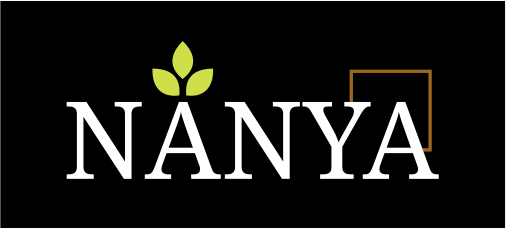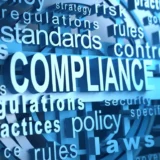The facility management industry stands at a crossroads. While the Global Integrated Facility Management market size will be USD 177.06 Billion by 2030 with substantial growth projected, organizations continue to grapple with significant operational hurdles that prevent them from maximizing their IFM investments. Understanding these challenges is crucial for businesses seeking to transform their facility operations and achieve sustainable success.
The Growing Complexity of Modern Facility Operations
Today’s facility management extends far beyond basic maintenance and cleaning. Organizations now demand comprehensive solutions that encompass everything from energy optimization to enhancing workplace experience. This evolution has created a web of interconnected challenges that require strategic thinking and innovative approaches.
1. Technology Integration Paradox
The promise of smart buildings and IoT-enabled facilities has created an unexpected challenge: technology fragmentation. Many organizations find themselves managing multiple disconnected systems that fail to communicate effectively. Implementation hurdles can include poor data quality, lack of integration among systems and the limited understanding of AI benefits.
Building management systems, security platforms, HVAC controls, and workplace booking tools often operate in isolation, creating data silos that prevent holistic facility optimization. This fragmentation leads to inefficient resource allocation, delayed response times, and frustrated end-users who expect seamless experiences.
The challenge becomes more pronounced when facilities managers attempt to extract meaningful insights from disparate data sources. Without proper integration, organizations miss opportunities for predictive maintenance, energy optimization, and space utilization improvements that could deliver significant cost savings.
2. Workforce Evolution and Skills Gap
There’s a growing gap in skilled facility staff. Hiring is tough, and those already employed need regular training to keep pace with evolving technologies and methodologies. The traditional facility management workforce faces pressure to adapt to new technologies while maintaining essential operational functions.
This skills gap manifests in several ways. Existing staff members struggle to operate sophisticated building management systems, while new hires often lack the practical experience needed to handle complex facility challenges. The situation is further complicated by the need for cross-functional expertise that combines technical knowledge with customer service skills.
Organizations must invest heavily in training programs while competing for limited talent in an increasingly competitive market. The challenge extends beyond technical skills to include soft skills like communication, problem-solving, and adaptability that are essential for modern facility management roles.
3. Cost Pressures and Budget Constraints
In 2024, facilities managers grappled with rising operating and energy costs, demands for greater sustainability and adaptations to hybrid work. These mounting pressures force organizations to do more with less while maintaining service quality standards.
Energy costs continue to rise, placing additional strain on facility budgets. Simultaneously, organizations face pressure to implement sustainable practices that often require significant upfront investments with long-term payback periods. This creates a challenging balance between immediate cost concerns and future sustainability goals.
The shift to hybrid work models has added another layer of complexity. Facilities must remain fully operational while serving fewer daily occupants, resulting in higher per-person operational costs. Organizations struggle to optimize space utilization while maintaining the flexibility needed to accommodate changing work patterns.
4. Sustainability Mandate vs. Operational Reality
Environmental sustainability has moved from a nice-to-have to a business imperative. Organizations face increasing pressure from stakeholders, regulators, and employees to reduce their environmental footprint. However, implementing meaningful initiatives towards sustainability while maintaining operational efficiency presents significant challenges.
The transition to renewable energy sources, implementation of waste reduction programs, and achievement of carbon neutrality goals require substantial coordination across multiple facility systems. Organizations must balance sustainability investments with immediate operational needs while ensuring that green initiatives don’t compromise service quality or occupant comfort.
Measuring and reporting progress with sustainability adds another layer of complexity. Facilities managers need robust data collection systems followed by capabilities to analyse and track environmental metrics accurately to help demonstrate progress toward sustainability goals.
5. Service Quality Standardization Across Multiple Locations
For organizations operating multiple facilities, maintaining consistent service quality across all locations presents ongoing challenges. Different services may have varying processes, technologies, and KPIs, making it challenging to streamline operations.
Each facility location may have unique characteristics, local requirements, and operational constraints that make standardization difficult. Local vendors, regulatory requirements, and cultural factors can create variations in service delivery that undermine the consistency that integrated facility management promises to deliver.
Creating standardized procedures that can be adapted to local conditions while maintaining quality benchmarks requires sophisticated management systems and extensive coordination. Organizations must invest in training, technology, and oversight mechanisms to ensure service standards remain consistent across their facility portfolio.
6. Vendor Management Complexity
Managing multiple service providers under an integrated framework creates coordination challenges that can undermine operational efficiency. Issues such as conflicting contracts, performance variations, and lack of coordination are common when attempting to integrate diverse service providers.
Traditional vendor management approaches often result in competing priorities, inconsistent service levels, and communication gaps that frustrate end-users. Each vendor may have different reporting systems, performance metrics, and operational procedures that make coordination difficult.
The challenge extends to performance measurement and accountability. When service failures occur, determining responsibility among multiple vendors can be time-consuming and may delay resolution. Organizations need robust vendor management frameworks that create clear accountability while enabling collaborative problem-solving.
7. Change Management and Organizational Resistance
One of the primary challenges in adopting IFM is resistance to change from employees and stakeholders. Traditional facility management processes are deeply rooted in many organizations. This resistance can undermine even well-planned IFM implementations.
Employees who are comfortable with existing processes may view IFM initiatives as threats to their job security or work routines. Department managers may resist changes that affect their operational autonomy or budget control. Without proper change management, these resistance points can derail implementation efforts and prevent organizations from realizing benefits through implementation of such practices in IFM operations.
Successful change management requires clear communication, stakeholder engagement, and demonstration of tangible benefits. Organizations must invest time and resources in building support for IFM initiatives while addressing legitimate concerns about operational disruption.
Emerging Challenges in the Post-Pandemic Era
The global pandemic has introduced new challenges that continue to shape facility management priorities. Health and safety protocols, space reconfiguration for social distancing, and enhanced cleaning requirements have become permanent considerations rather than temporary adaptations.
Organizations must now balance traditional operational efficiency goals with health and safety imperatives that may require additional resources or operational modifications. The need for flexible space configurations that can adapt to changing occupancy patterns adds complexity to facility planning and management.
Adoption of remote work has also changed space utilization patterns, requiring new approaches to facility optimization. Organizations must maintain full facility operations while serving reduced or variable occupancy levels, creating efficiency challenges that didn’t exist in traditional workplace models.
Strategic Implications for Business Leaders
These challenges have significant implications for business strategy and operational planning. Organizations that fail to address Integrated Facility Management Services challenges effectively may experience increased operational costs, reduced employee satisfaction, and missed opportunities for competitive advantage.
The complexity of modern facility management requires strategic thinking that goes beyond traditional cost-cutting approaches. Successful organizations invest in technology platforms, workforce development, and vendor partnerships that create long-term operational advantages.
Leadership commitment is essential for overcoming IFM challenges. Without executive support for necessary investments in technology, training, and process improvement, organizations will continue to struggle with fragmented, inefficient facility operations.
The Path Forward: Building Resilient Facility Operations
Addressing these challenges requires a comprehensive approach that combines strategic planning, technology investment, and organizational development. Organizations must move beyond reactive problem-solving to create proactive facility management capabilities that anticipate and address challenges before they impact operations.
Success in today’s IFM landscape requires partners who understand these complex challenges and have proven capabilities to address them effectively. The right facility management partner can help organizations navigate technology integration, workforce development, vendor coordination, and sustainability initiatives while maintaining operational excellence.
The challenges facing integrated facility management are complex and interconnected, but they’re not insurmountable. Organizations that take a strategic approach to addressing these challenges while partnering with experienced Integrated facility management service providers can create competitive advantages that extend far beyond cost savings.
Turn These Challenges into Competitive Advantages
Every challenge outlined above represents an opportunity for organizations that approach them strategically. The difference between struggling with fragmented systems and achieving operational excellence often comes down to having the right expertise and proven methodologies.
At Nanya Services LLP, we’ve helped businesses to overcome these exact challenges through tailored integrated facility management services. Our approach addresses cost pressures, technology integration, and sustainability requirements while delivering measurable results. Let’s discuss how we can solve your specific facility management challenges.
Frequently Asked Questions
1. What are the main technology integration challenges in IFM?
The primary technology challenges include managing multiple disconnected systems, poor data quality, lack of system integration, and insufficient understanding of AI benefits. Organizations often struggle with data silos that prevent holistic facility optimization and delay the extraction of meaningful insights for predictive maintenance and energy optimization.
2. How can organizations address workforce skills gaps in facility management?
Organizations can address skills gaps through comprehensive training programs that combine technical and soft skills development, competitive compensation packages to attract talent, partnerships with educational institutions, and mentorship programs that help existing staff adapt to new technologies and methodologies.
3. What strategies help manage rising facility management costs?
Effective cost management strategies include implementing energy-efficient technologies, optimizing space utilization, negotiating consolidated vendor contracts, adopting predictive maintenance approaches, and balancing immediate cost concerns with long-term sustainability investments that provide ongoing operational savings.
4. How do you ensure service quality consistency across multiple facility locations?
Maintaining consistency requires developing standardized procedures that can adapt to local conditions, implementing robust training programs, creating clear performance metrics, establishing regular quality audits, and using technology platforms that enable centralized monitoring and coordination across all locations.
5. What are the best practices for vendor management in integrated facility management?
Best practices include consolidating vendor contracts with unified terms, implementing comprehensive vendor performance management systems, establishing clear accountability frameworks, creating collaborative problem-solving processes, and using technology platforms that enable seamless coordination and communication among all service providers.































